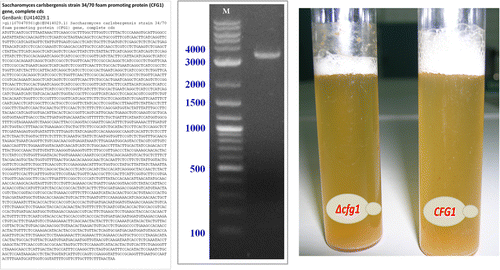The yeast used to make beer has yielded what may be the first gene for beer foam, scientists are reporting in a new study. Published in ACS' Journal of Agricultural and Food Chemistry, the discovery opens the door to new possibilities for improving the frothy "head" so critical to the aroma and eye appeal of the world's favorite alcoholic beverage, they say.
Tomás G. Villa and colleagues explain that proteins from the barley and yeast used to make beer contribute to the quality of its foam. The foamy head consists of bubbles containing carbon dioxide gas, which yeast produces during fermentation. Proteins gather around the gas, forming the bubbles in the foam. Studies have shown that proteins from the yeast stabilize the foam, preventing the head from disappearing too soon. But until now, no one knew which yeast gene was responsible for making the foam-stabilizing protein.
The researchers identified the gene, which they call CFG1. The gene is similar to those already identified in wine and sake yeasts that also are involved in foaming. "Taken together all the results shown in the present paper make … CFG1 gene a good candidate to improve the foam character in the brewing industry," they say.
More information: "Cloning and Characterization of the Beer-Foaming Gene CFG1 from Saccharomyces pastorianus" J. Agric. Food Chem., 2012, 60 (43), pp 10796–10807, DOI: 10.1021/jf3027974
Journal information: Journal of Agricultural and Food Chemistry
Provided by American Chemical Society



















